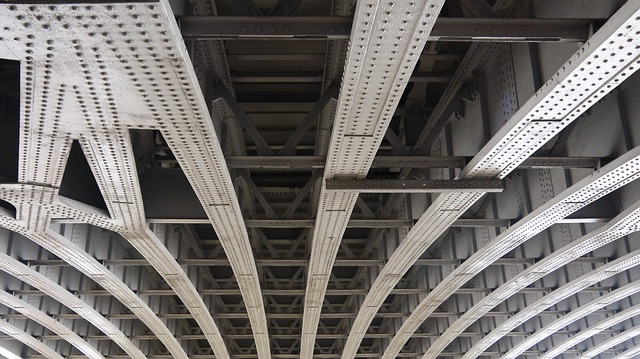Girder
A girder is a large and deep type of beam that is used in construction. It is typically capable of longer spans and taking greater loads than a normal beam, and is often used as a main horizontal structural support for smaller beams, such as in bridge construction.
There are several different types of girder available depending on circumstances, and the load they are required to support:
- Smaller steel girders can be 'rolled' into the required shape. When girders become larger however, a standard rolled shape may not be available and a plate girder may have to be fabricated instead.
- A plate girder is typically an I-beam cross-section made up of separate structural steel plates which are welded, bolted or riveted together to form the deeper vertical web and narrower horizontal flanges of the beam. Plate girders are commonly-used for spans of up to 15m.
- A gantry girder is used for a gantry crane - typically consisting of two ‘A’ frames connected by a lattice cross member which straddles the work area. The lifting gear is suspended from the horizontal girder and can move along it on rails. For more information, see Types of crane.
- A box girder is fabricated from steel plates used to form a rectangular box. This resists torsion better than a plate girder and can be used when depth constraints mean a plate girder cannot be made deeper.
[edit] Find out more
[edit] Related articles on Designing Buildings Wiki
Featured articles and news
The UK's Modern Industrial Strategy: A 10 year plan
Previous consultation criticism, current key elements and general support with some persisting reservations.
Building Safety Regulator reforms
New roles, new staff and a new fast track service pave the way for a single construction regulator.
Architectural Technologist CPDs and Communications
CIAT CPD… and how you can do it!
Cooling centres and cool spaces
Managing extreme heat in cities by directing the public to places for heat stress relief and water sources.
Winter gardens: A brief history and warm variations
Extending the season with glass in different forms and terms.
Restoring Great Yarmouth's Winter Gardens
Transforming one of the least sustainable constructions imaginable.
Construction Skills Mission Board launch sector drive
Newly formed government and industry collaboration set strategy for recruiting an additional 100,000 construction workers a year.
New Architects Code comes into effect in September 2025
ARB Architects Code of Conduct and Practice available with ongoing consultation regarding guidance.
Welsh Skills Body (Medr) launches ambitious plan
The new skills body brings together funding and regulation of tertiary education and research for the devolved nation.
Paul Gandy FCIOB announced as next CIOB President
Former Tilbury Douglas CEO takes helm.
UK Infrastructure: A 10 Year Strategy. In brief with reactions
With the National Infrastructure and Service Transformation Authority (NISTA).
Ebenezer Howard: inventor of the garden city. Book review.
The Grenfell Tower fire, eight years on
A time to pause and reflect as Dubai tower block fire reported just before anniversary.
Airtightness Topic Guide BSRIA TG 27/2025
Explaining the basics of airtightness, what it is, why it's important, when it's required and how it's carried out.
Construction contract awards hit lowest point of 2025
Plummeting for second consecutive month, intensifying concerns for housing and infrastructure goals.
Understanding Mental Health in the Built Environment 2025
Examining the state of mental health in construction, shedding light on levels of stress, anxiety and depression.






















